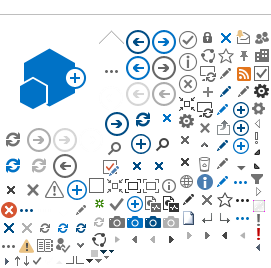
A new study published in People and Nature by the Leibniz Centre for Agricultural Landscape Research (ZALF) and the Landscape Conservation Association Northwest Saxony shows: Whether farmers participate in EU-funded measures for biodiversity conservation strongly depends on their personal contacts. The researchers interviewed 70 farms in Northwest Saxony – about one quarter of all farms in the region. The results indicate that financial incentives alone are not decisive. Instead, peer-to-peer exchange and advice from non-profit organizations play a central role. Farmers who feel supported within their networks and receive guidance from Non-profit organizations are much more likely to engage in biodiversity-friendly practices – shedding light on why existing programs have often had limited impact so far.
The European Common Agricultural Policy (CAP) aims not only to secure affordable food but also to strengthen rural regions, mitigate climate change and protect biodiversity. To this end, it provides subsidies for practices such as flower strips, cover crops and diverse crop rotations. These measures are part of the so-called agri-environmental schemes (AES).
However, biodiversity continues to decline across Europe, for example in the case of insects that are essential for pollination. Understanding which factors influence farmers’ participation in AES is therefore crucial. The study shows that not only financial incentives matter, but also who farmers talk to in their daily practice and from whom they receive advice. It highlights the importance of social exchange among farmers and with advisory organizations – a factor that has often been overlooked in previous research.
Case study in Northwest Saxony
The study was conducted in the former district of Delitzsch in Northwest Saxony, an intensively farmed agricultural landscape dominated by arable cropping. Seventy farms were interviewed – about one quarter of all farms in the region. All participants are members of the Landscape Conservation Association Northwest Saxony, a non-profit association that promotes the preservation of diverse cultural landscapes and habitats for endangered plant and animal species. The researchers recorded with whom the farms regularly interact – whether with peers, associations, public offices or companies – and analyzed how these contacts influenced decisions on land management.
Advice and peer support as key factors
The results show clear differences: Many farmers turn to large agribusiness companies for advice on production, while non-profit organizations and public offices are the main contacts for biodiversity-related questions. Farmers who seek advice from these organizations and feel supported by their peers are much more likely to participate in AES. Local peer support is particularly important: farmers are more inclined to join when their colleagues are already taking part.
“We were able to show that support through personal contacts is a decisive factor for participation,” says
Dr. Maria Kernecker from ZALF. “If we can strengthen these exchange structures, more farms can be motivated to adopt conservation measures.”
The role of large and small farms
Large farms play a key role: they often combine experience in both intensive production and conservation measures and can act as role models when they share their knowledge. Smaller farms, by contrast, tend to orient themselves towards holdings of similar size rather than large neighbors – underlining again the importance of exchange between peer groups. Arable farms are less likely to participate in AES in contrast to mixed or grassland farms with meadows and pastures. This is because measures such as flower strips or diverse crop rotations are more difficult to integrate into arable farming systems and are perceived as potentially reducing yields. In addition, these farms often rely on advice from agribusiness companies, whose focus is more on production than on conservation.
Implications for policy and practice
The study concludes that large farms with experience in both production and conservation should be encouraged to share their knowledge with others. Non-profit organizations and public advisory services need to be strengthened so that they can provide integrated advice on both production and conservation. Finally, the study highlights that peer-to-peer support among farmers is a decisive lever for increasing participation in biodiversity conservation programs.
Further information:
Note on this text:
This is a summary produced with the help of artificial intelligence of the original article:
Naaf, T., Kernecker, M., Weidt, H., Bülow, S., & Vierling, A. (2025). Social network analysis among German farmers reveals potentials to overcome the production-conservation dichotomy in land use. People and Nature.
https://doi.org/10.1002/pan3.70183, published Open Access under the CC BY 4.0 license
The text has been carefully reviewed and edited according to
ZALF’s internal AI use guidelines.
Project partners:
- Leibniz Centre for Agricultural Landscape Research (ZALF)
- Landscape Conservation Association Northwest Saxony
Funding
This study was conducted within the project ECO2SCAPE, a transdisciplinary project within the Research Initiative for the Conservation of Biodiversity (FEdA). It was funded by the German Federal Ministry of Education and Research (BMBF: ZALF Grant ID: 03LW0082, LPV Grant ID: 03LW0081).
